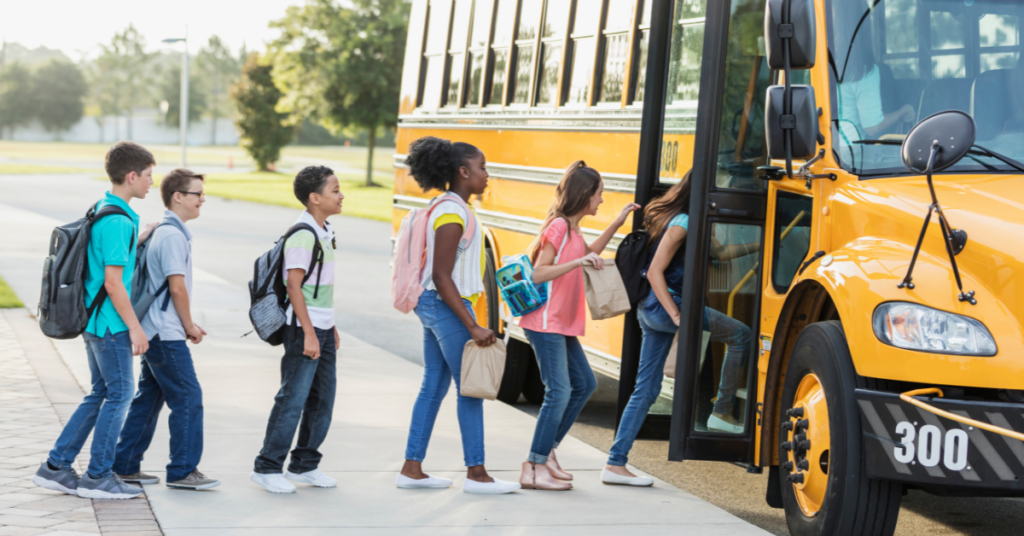For any parent, fostering a healthy relationship with your child(ren)’s teacher is a valuable process. But for LGBTQ+ parents, these relationships are key to developing LGBTQ+ friendly schools!
We know how tricky this work can be. So, we asked our network of LGBTQ+ parents and families to share their top tips for successfully navigating these conversations.
Check in with your children
Many parents we talked to emphasized the importance of introducing yourself and getting more involved. But first, Emily (a new parent and someone who grew up with LGBTQ+ parent) suggests talking with your children.
“By middle school, my parents empowered me to come out to teachers as I felt comfortable,” Emily says. “They would attend events, sport games, and parent-teacher nights together, but they did not [always] meet with every teacher…I was able to control my own story and decide how to come out. Often, that meant being out and proud before my parents would have usually felt comfortable on their own.”
Introduce your LGBTQ+ family to teachers
After you talk with your child(ren), many parents recommended meeting with principals and teachers ahead of time. This empowers educators with the language they need to describe your family. It also lays the foundation for future work around building LGBTQ+ friendly schools.
“We have botched this up so many times,” says Bethany S. from Iowa. “Now, we usually hold a meeting with the teacher the week before school starts to share information about our family.”
“We have found in-person meetings with teacher(s) helpful at the beginning of the school year,” reiterates the Byram-Kolnick family from St. Paul, Minnesota. “Our child’s teacher can put a face to our names, and we feel it helps with relationship-building and connection.”
You can also use these meetings to start talking about what LGBTQ+ friendly schools look like. “We take this as an opportunity to talk about how the teacher can support our child when other students ask (or bully) her about her family,” says the Venable-Novak family in Clarendon, VT. “We also recognize that we have the privilege of taking the time to meet with our child’s teacher, and not all families do. So we encourage our teacher to send home a survey or email asking about each student’s family, home(s), traditions, and routines.”
Tip: Introducing yourself, your family, and your needs all at once can be intimidating. If you need to, you can start the conversation with this quick email template!
As the year continues, seek out additional opportunities to touch base with your child(ren)’s teachers. The Ramsey family from Lynwood, WA uses Open Houses and parent-teacher conferences to see if any more questions or concerns have popped up. This way, educators know that they should come to you with their questions—not to your children. “Our son is not your in-house [LGBTQ+] educator,” the WD family says.
Empower educators to build a more inclusive classroom
After you establish your family’s needs, work with teachers to see this as an opportunity to start bigger discussions about family diversity.
For example, a common issue that arises for LGBTQ+ families centers around gendered holidays like Mother’s and Father’s Day. But the Byram-Kolnick family worked with their school to see these special days as lessons.
“Mother’s and Father’s Day are celebrated in the classroom, usually by making a craft or card…and it presents as a great opportunity for teachers and staff to be inclusive of queer families [by] having conversations with all students about family diversity,” they say. “We don’t have a father to celebrate in our family. [Instead,] how can we celebrate your ‘momo’? How can we celebrate your ‘mama’?”
You can also give educators concrete suggestions on how to explicitly celebrate LGBTQ+ families in the classroom. “As a new parent, I will be asking educators about the books they read, the images they share with students, and even the examples they use in curriculum,” says Emily M. “The recognition and normalization of different types of families and identities can start at any age and in every classroom.”
“I actually offer to work with the librarian on stocking inclusive books for classrooms,” says the Venable-Novak family. “Some years our library has a budget for new books and sometimes they don’t. I’ve purchased books as a donation, and I’ve also advised on what books to purchase, making sure that they not only represent LGBTQ+ families, but families of color, families formed through adoption and foster care, families who speak different languages and families with inter-generational households. We live in a very rural place, so it’s important that youth in our community see the family diversity that our school district is lacking.”
Get involved
Finally, you can get more involved in the school community, thereby providing more support teachers, bringing more visibility to LGBTQ+ families, and gaining allies in this work.
“Each year, I—a nonbinary parent—offer to read stories to my child’s class. My child and I choose the books together, usually picking at least one about an LGBTQ+ family. This not only allows me to introduce myself, my parent name, and my pronouns to my child’s classroom, but it’s also fun and interesting for them!”
The Davis family agrees. “Join the PTO, get involved with clubs…, volunteer for school-sponsored and town events…One connection at a time,” they say. “Our daughter’s now a teen, and we have a wide network of support.”
Every family and every school district is different, but you are not alone. Across the country, there are parents in the trenches with you, fighting for more LGBTQ+ friendly classrooms. For more resources on building an inclusive school, check out our library!



